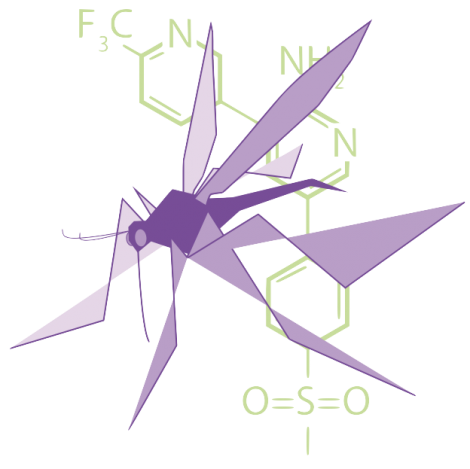A group of researchers are seeking to redefine the way we treat malaria. Medicines for Malaria Venture (MMV) is a non-profit public-private partnership founded in 1999 with a mission to “reduce the burden of malaria in disease-endemic countries by discovering, developing and facilitating the delivery of new, effective and affordable antimalarial drugs.”
Malaria is an infectious disease caused by parasites, and transmitted by mosquitoes. Its presentation can range from relatively mild and self-limiting to potentially life-threatening. The earliest known record of malaria symptoms dates back to Chinese medical writings from 2700 BC, and there have been various advances, as well as challenges, in the diagnosis and treatment of malaria ever since.
Naturally derived substances were initially used to treat malaria. As early as the second century BC, the Qinghao plant (also known as sweet wormwood) was prescribed as a remedy; its anti-fever properties were first noted in 340 AD. Another natural product that became recognized in the early seventeenth century for its antimalarial effects is cinchona tree bark. The active ingredient from the bark is quinine, and this was the mainstay of malaria treatment for centuries until the development of synthetic antimalarials starting in the 1930s.
Despite the availability of antimalarials, malaria and its treatment still poses many challenges. For one, resistance is a prevalent and very real concern. In fact, resistance has been documented with all current antimalarial drugs, including artemisinin and its derivatives. Adding to the complexity is the fact that there are various types of malarial infection, depending on the species of the infecting parasite, causing the effectiveness of drugs to vary. As such, the need for new antimalarial agents is always present.
To address this need, researchers worldwide are in a constant search for potential agents that could become effective antimalarials. The overwhelming majority of molecules screened do not successfully make it past the initial stages of the drug discovery process, and any compounds that show potential still have a long way to go before they make it to the market as viable drugs for human consumption. This process is not only long, but also extremely costly. Because malaria is usually thought of as a disease of the developing world, it is not typically considered an attractive target for drug development by pharmaceutical manufacturers, and it is less likely to receive funding.
Recently, researchers supported by MMV have successfully completed in vitro and animal testing of a novel class of compounds — the kinase inhibitor. Though targeting protein kinases is not a new concept on its own, MMV’s research is the farthest that a kinase inhibitor has come in the drug development process. The next step for the compound is to undergo clinical development leading to testing in humans.
A key advantage of this class of compounds is the fact that no current antimalarial agents share their mechanism of action. Because of this, there is no risk of existing resistance, though this is not to say that resistance cannot or will not develop.
Dr. Ian Crandall, an associate professor at the University of Toronto, specializes in the field of malaria research and antimalarials. His research focuses on evaluating synthetic molecules for their potential as antimalarials and resistance-reversing agents.
Crandall explains that MMV has provided significant support and funding for antimalarial research and development. However, only a handful of projects can be selected and funded every year, and many promising drug candidates may have to be abandoned or postponed due to lack of funding.
“A dirty little secret,” says Crandall, “is that Toronto has some of the best early-stage work in malaria that no one has ever heard of.”
Though his research groups do not currently receive funding from MMV, Crandall continues to work on screening various molecular candidates, including kinase inhibitors. In collaboration with other scientists, he is investigating different molecules of interest, including bivalent imidazoliums (to prevent parasites from entering human red blood cells and causing disease); pyrimidine synthesis inhibitors; and heat shock protein 90 inhibitors.
With the advent of more advanced research methods, there is still hope that more effective agents for malaria prevention and treatment will be discovered and developed.
Sources: Journal of Medicinal Chemistry (JMC), Stanford University, CDC,
pipeline.corante.com



